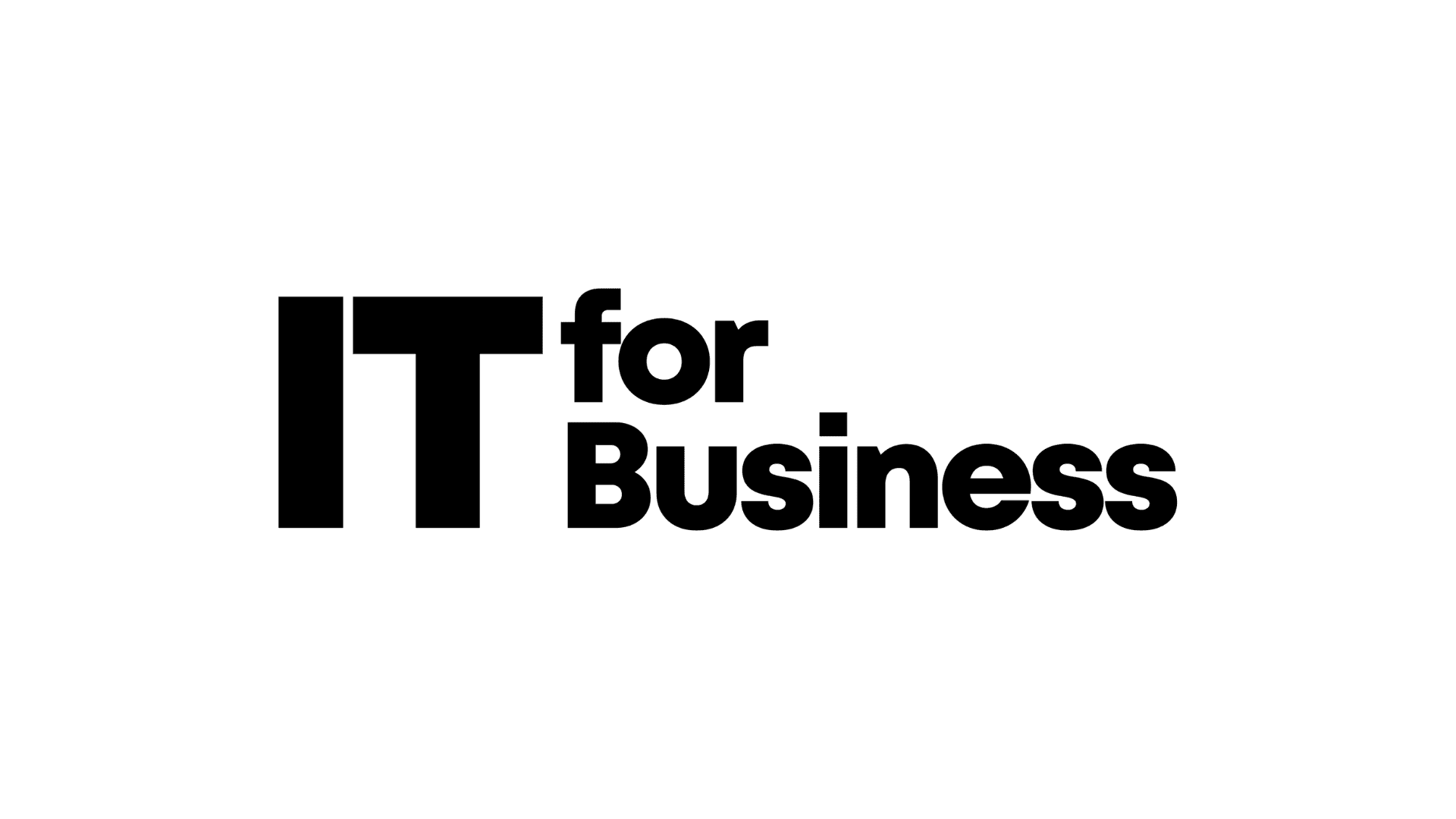Beyond the paradox: avoiding the Product Management pitfalls
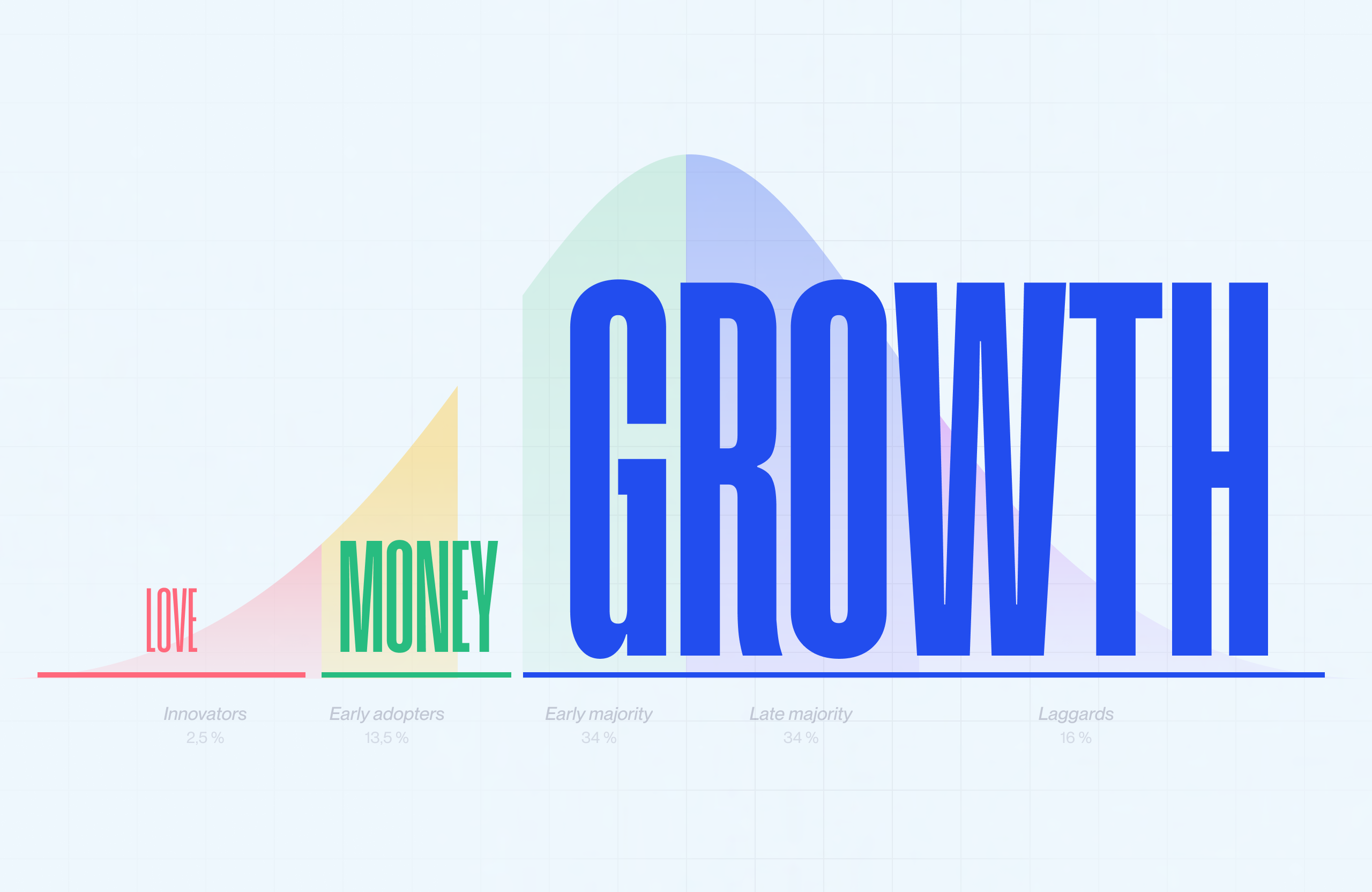
Table of contents
The role of a Product Manager entails juggling a multitude of challenges. It's a journey marked by strategic decisions aimed at not only creating a viable product but also one that is well-received, profitable, and widely adopted. However, each phase of product development has its own pitfalls to avoid and demands particular attention.
Understanding the Contradictions: Choosing the Right Battles
Product Management: a profession of dualities
The initial step in steering clear of the pitfalls of Product Management involves assimilating the abundance of conflicting advice and opinions pouring in from all directions. The trap here is analysis paralysis. It's tempting to seek out ready-made solutions, but doing so can lead to overlooking the unique context in which the product operates.
The mission of a Product Manager is laden with paradoxes:
Thinking big but delivering small.
Embracing uncertainty while seeking answers.
Planning for the long term while taking action in the short term.
This "Product Manager Paradox" underscores the necessity of balancing overarching strategic visions with daily tactical actions.
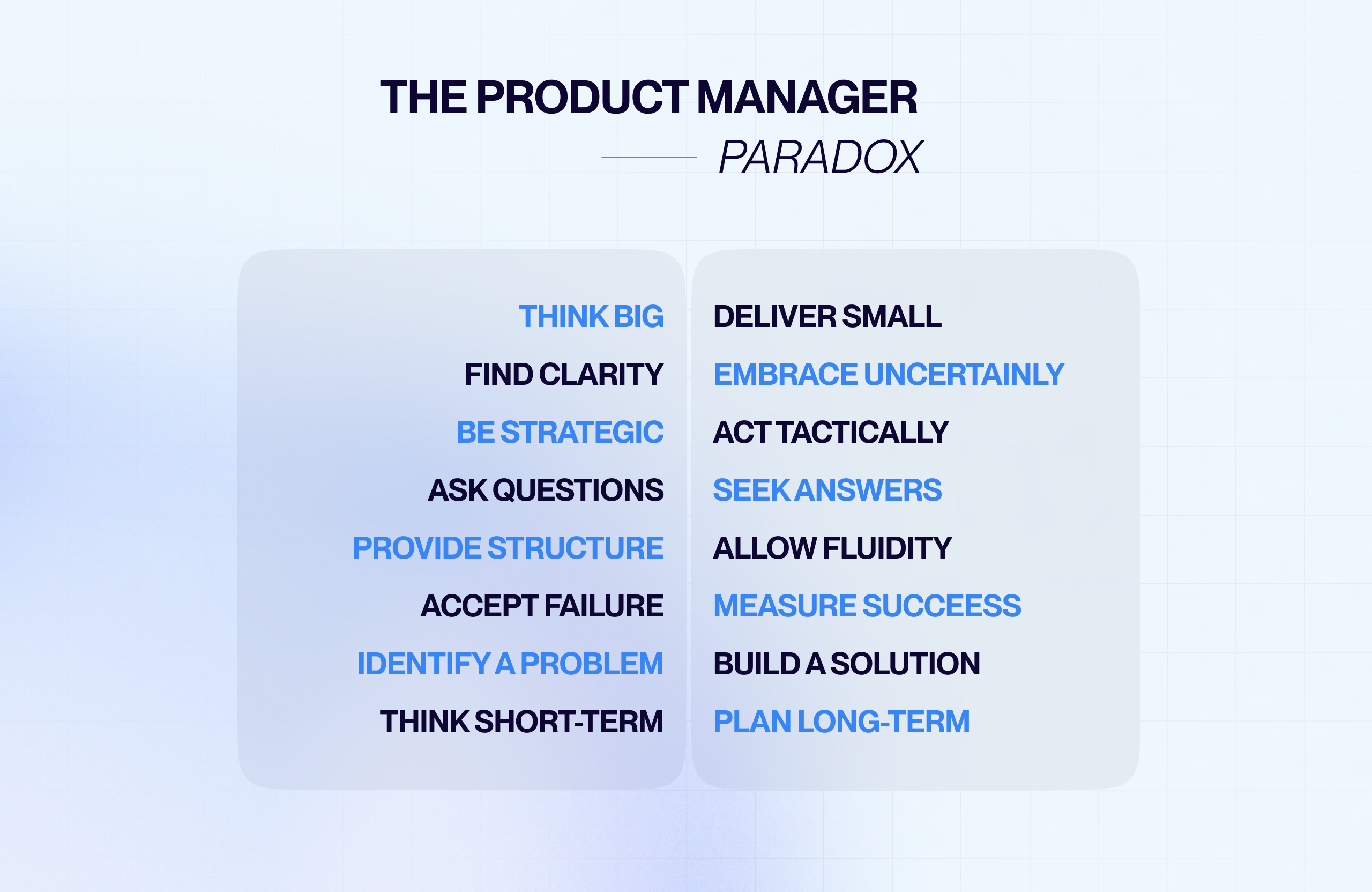
The challenge of fulfilling strategic frameworks like the "Company Vision" outlined below is emblematic of this dilemma, where the complexity of each component can even hinder the progress of the most seasoned professionals.
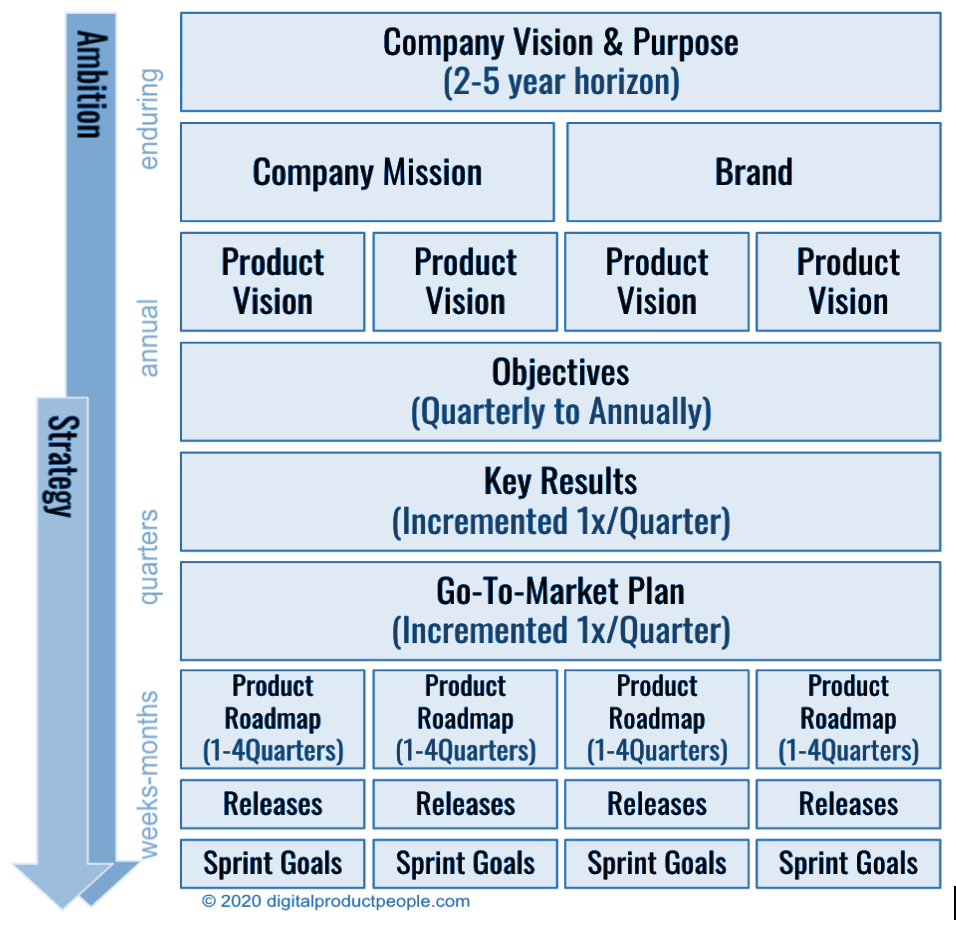
In essence, failure often arises from excellent decisions made to achieve poorly calibrated objectives.
Understanding the Pitfalls to Avoid with the Love, Growth, Money Model
How can one navigate through this? By keeping in mind Geoffrey Moore's Law of Diffusion of Innovations, one gains better insight into the pitfalls to avoid and the advice to follow at each stage. Specific focus and tailored actions are necessary to steer clear of the "valley of death" trap that looms over many startups.
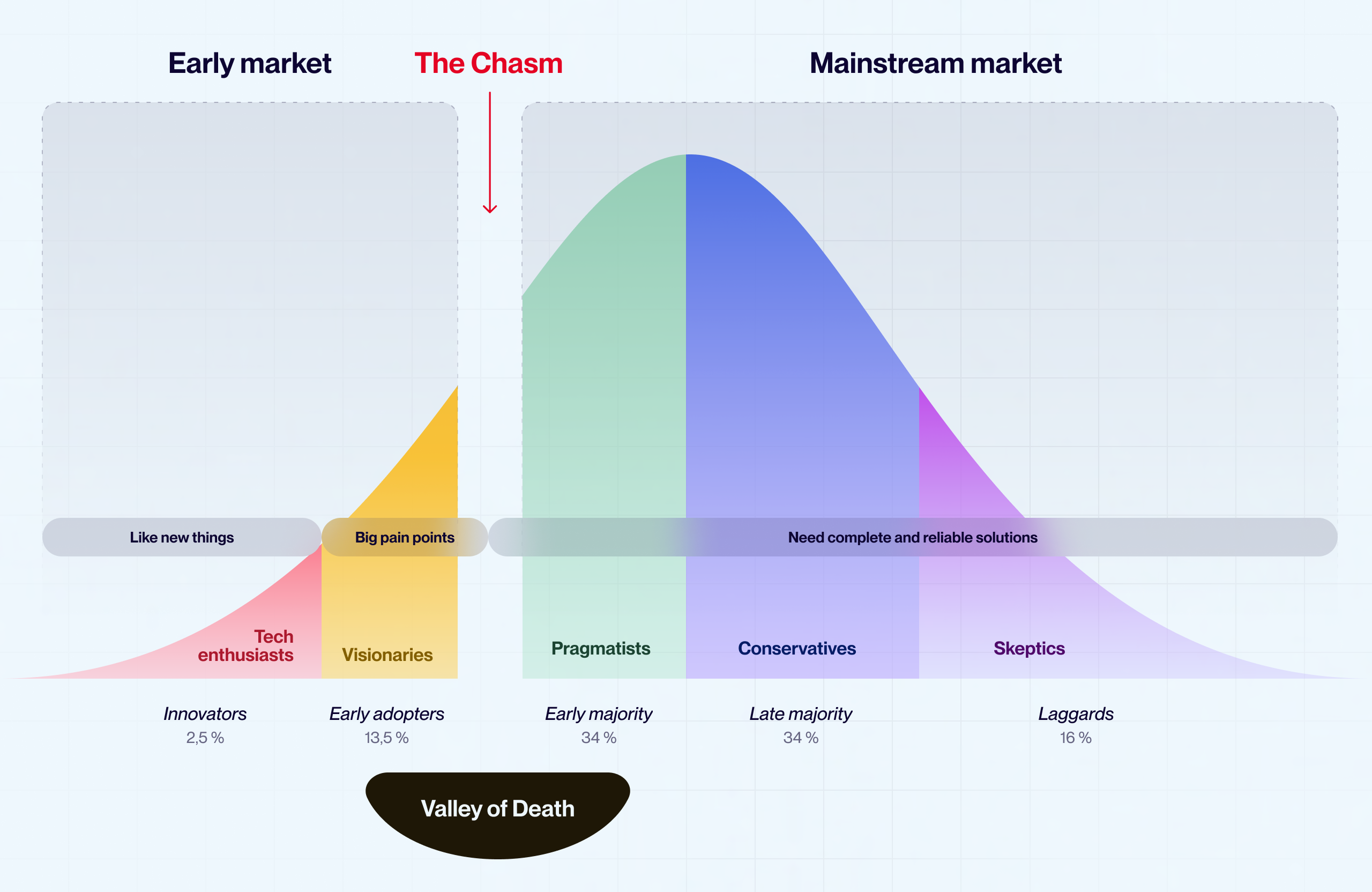
To further simplify the approach, Alexandre Jubien's Love, Money, Growth model serves as a compass in the vast ocean of possibilities. Begin by creating a product that users love (Love), ensure intelligent monetization strategies (Money), and finally, aim for sustainable growth (Growth). This sequence guides Product Managers through the complex process of innovation, without succumbing to hastiness that could jeopardize the product in the long run.
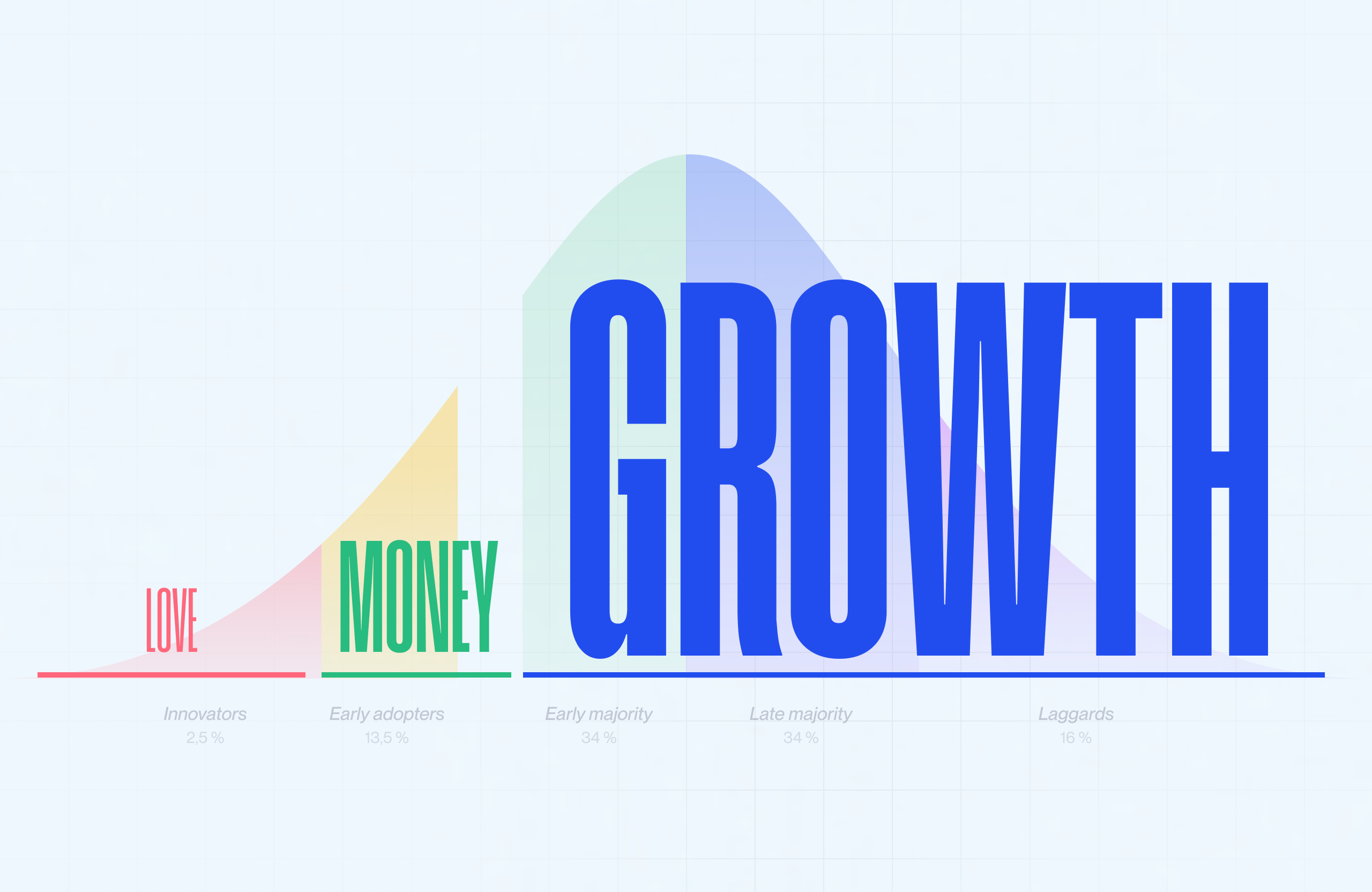
The Pitfalls, Step by Step
Let's now navigate through each step to uncover common pitfalls!
1st Step: LOVE - Designing a Product that Touches Users' Hearts
The objective here is to build a product that resonates emotionally with users. To achieve this, here are the guidelines I recommend:
Avoid getting too comfortable with quick & dirty approaches.
In the Love phase, the goal is to create a product that emotionally resonates with users. The trap to avoid is persisting in a quick & dirty approach for too long, under the guise of agility. While rapid iterations and rudimentary prototypes are useful for testing hypotheses, lingering on them can result in unstable foundations for the product. It's crucial to know when it's time to transition from rapid prototyping to more structured and polished development.
Ask yourself: How much am I willing to invest in disposable elements to validate my idea? Unfortunately, we encounter many startups that have opted for disposability throughout the Love phase, more or less consciously, and are unable to progress to the "Money" or "Growth" stages due to a lack of a scalable solution. Being aware of the maturity level of one's platform is crucial from this stage onwards.
Drive ambition as much as functional scope, deadlines, and costs.
Another pitfall of this stage is failing to capture market traction, the famous "Love," while adhering to deadlines and budget. Even when focusing on a prioritized persona and specific use case, it can be challenging to stay within budget while preserving the right level of quality.
Rather than making these contradictory and impossible choices between speed, quality, and functional scope... Drive different choices for different parts of the product.
I recommend choosing the level of ambition for each feature one by one, focusing on the core experience, and proceeding more directly with other aspects of the product. This article focuses on this approach.
2nd Step: MONEY - Aiming for sustainable growth
Find the balance between monetization and growth.
Monetization is a critical phase where the product must start generating revenue. The trap here is hastily monetizing features that are essential for the adoption and growth of the product.
A revenue model must be thoughtfully crafted to support growth rather than hinder it. It's imperative to understand which features are perceived as adding value by users and can therefore be monetized, BUT... without compromising the product's adoption or virality.
So, be careful not to go too far and monetize features responsible for the product's viral growth. We must find the perfect balance between frustration and encouragement without limiting our growth. Because even if we're at the Money stage, we must keep the Growth stage in mind.
Look at Slack's pricing grid: the free plan allows for unrestricted adoption and dissemination of the product. Monetized features are geared towards advanced use cases.
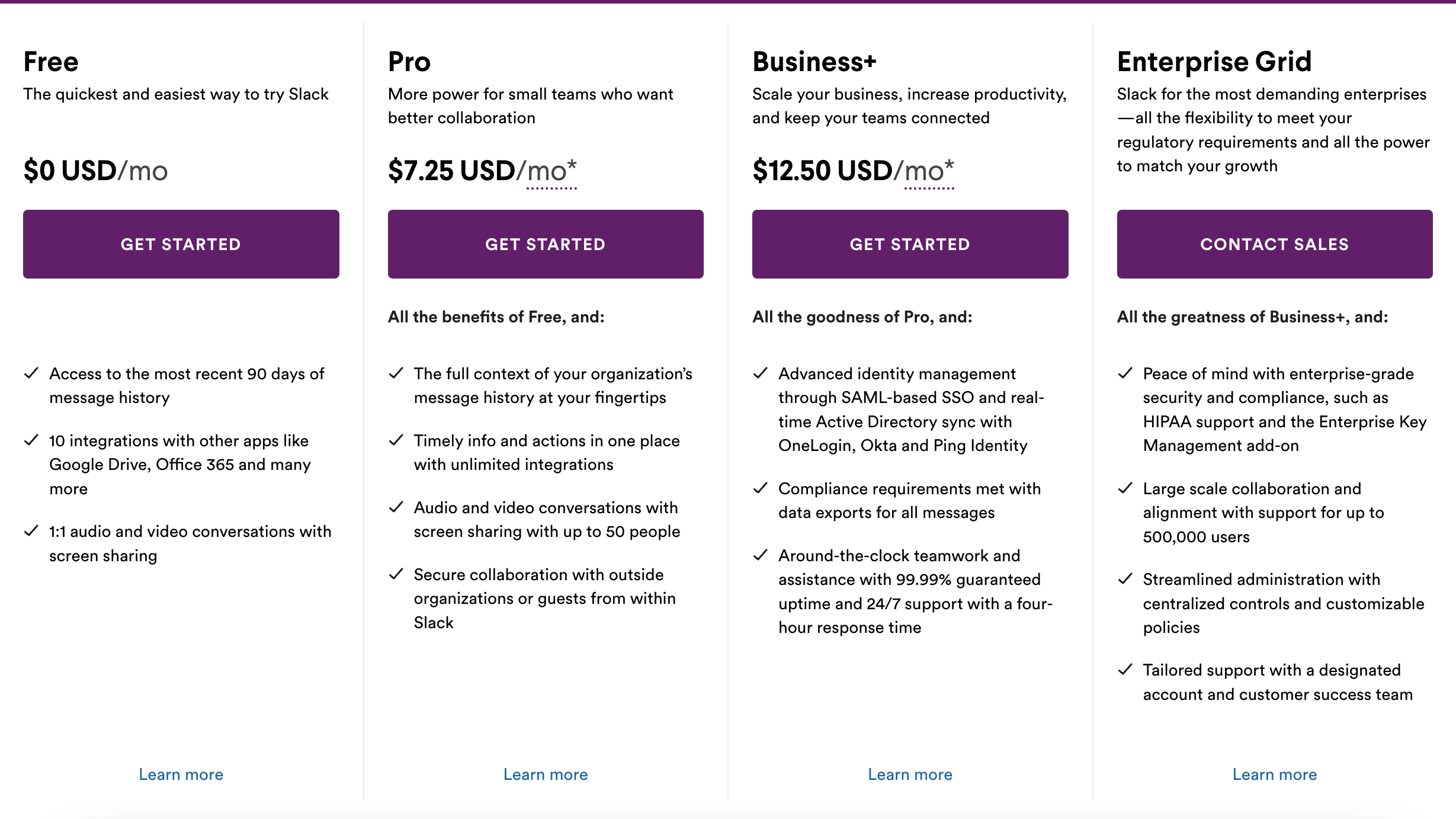
To achieve these results, at BeTomorrow, we have developed our own value-growth compatibility model, along with workshops that facilitate this strategic reflection.
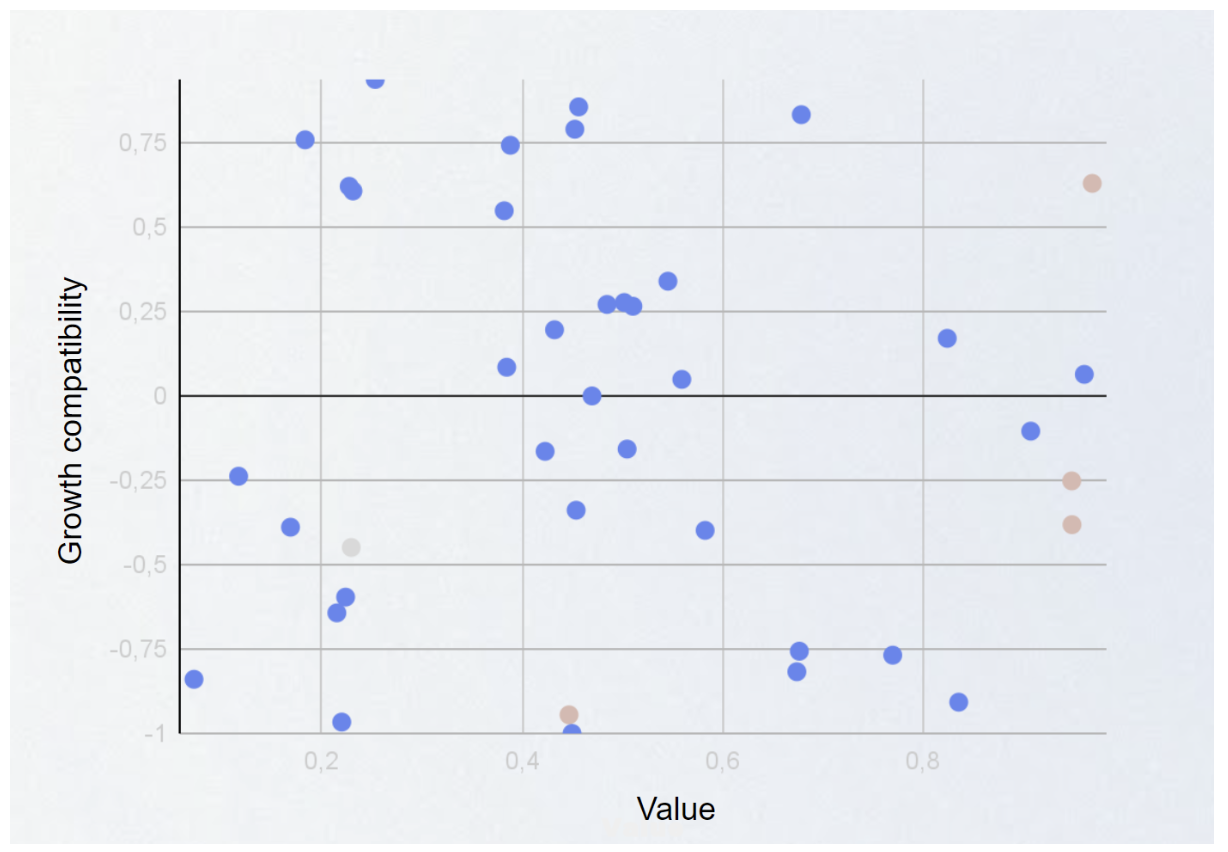
3rd Step: GROWTH - Developing a cross-brand promise
“If you want to achieve results you haven't achieved before, you must start doing things you haven't done before.”
When it comes to growth, the major challenge isn't simply to "hit the target," but to develop a brand promise that transcends features to appeal to a wide range of users. At this stage, additional features are introduced to address objections from a broader audience. The goal is to convince each individual to abandon their historical solution in favor of choosing your product. The pitfall to avoid here is reducing the product to a mere "toolbox" that checks all the boxes.
It's crucial to forge a brand identity that carries a vision, a promise that goes beyond immediate utility to embody values, a lifestyle, or an experience that users want to follow and identify with. We recommend introspection to understand what resonated with the target audience.
A phase of (re)defining the user-centered brand platform, including interviews, helps better understand where we come from and decide where we want to go.
Conclusion: a delicate balance between strategy and execution
Product Managers must navigate carefully through a multitude of advice, methodologies, and user expectations to create a product that not only meets needs but also generates revenue and grows sustainably. Each step, from Love to Growth, must be approached with an appropriate strategy and a clear vision of the pitfalls to avoid to ensure that the product reaches its full potential.
Thank you for reading this article.
STAY TUNED— OUR RESSOURCES

AI and Branding: a creative revolution or a limited tool?

Responsible AI: key concepts and best practices
